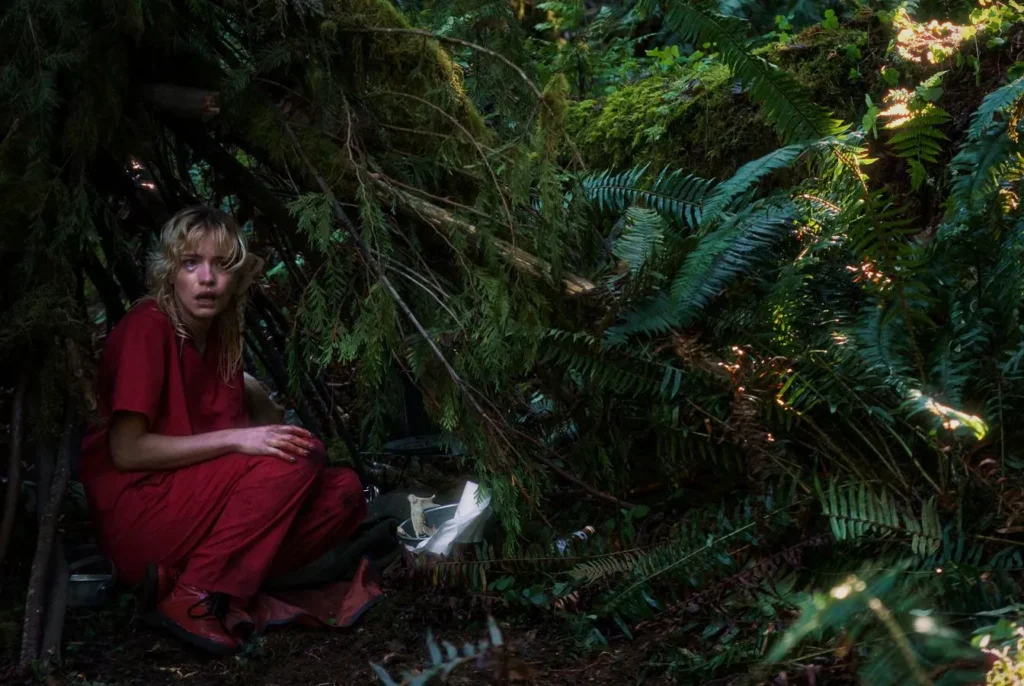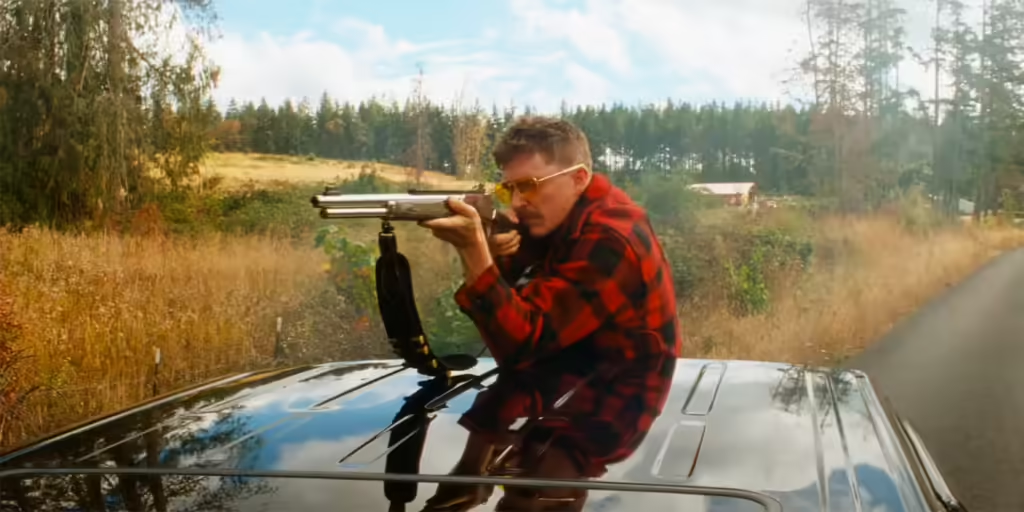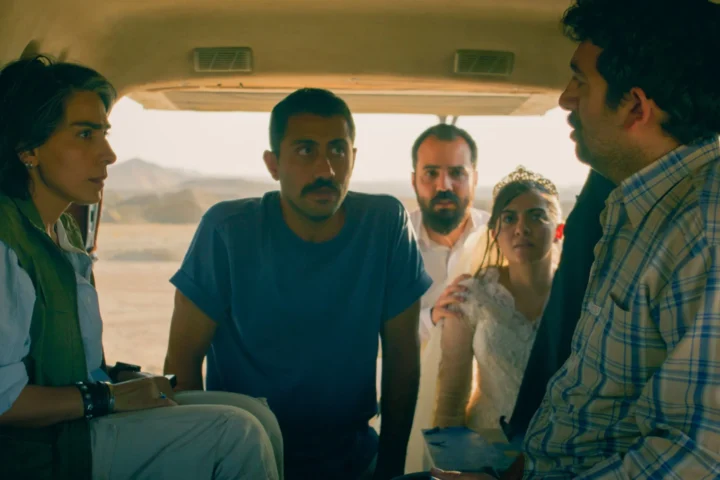Better the devil you know than the devil you don’t. These lyrics strike a perfect chord at a key moment in J.T. Mollner’s twisty thriller Strange Darling, one of the most inventive films of 2024. It plays a cunning game with its audience, luring us into thinking we’ve predicted the next twist—only to prove us wrong time and again. In a bonafide sleeper of a movie, Mollner orchestrates a tense game of cat and mouse, but the real prey isn’t just the characters; it’s the viewer. Following the final spree of a notorious serial killer who has so far eluded capture, Mollner crafts a scenario that feels recognizable—until it doesn’t.
Unfolding in six chapters and an epilogue, each segment is strategically rearranged as the filmmaker expertly toys with our expectations. Mollner opens with a text narration about a killer on the loose, immediately implicating a menacing figure as if to set expectations early. What follows is a bang up chase down an Oregon country road, where a bloodied Willa Fitzgerald (credited as “The Woman”) is furiously pursued by a shotgun-wielding Kyle Gallner (credited as “The Demon”). But why is he chasing her? And why is he trying to kill her?

The answer to what has transpired between them is soon revealed—and then revealed again—but what exactly is the relationship between “The Woman” and “The Demon”? To preserve the film’s secrets (and in line with Mollner’s no-spoilers plea), I won’t give too much away. Early in the film, however, we witness their initial meeting, where they negotiate whether to share a motel room for a one night stand. They do, her initial hesitation giving way to a ferocious sex game of consent, control and unexpected safe words. But what part of their interaction is genuine? Whose emotions are real? Mollner isn’t revealing his hand just yet, and this motel encounter—revisited several times with different narrative intentions—is so deftly constructed that we’re left guessing who truly holds the upper hand, creating formidable psychological suspense.
For reasons best discovered in the theater, their kinky encounter spirals out of control, leading back to the pursuit in the film’s opening moments. This chase ultimately involves a pair of ex-hippie doomsday preppers, played gamely by Ed Begley Jr. and Barbara Hershey. Their brief appearance suggests an eccentric, lived-in marriage, offering a blend of warmth and campy relief. But they quickly find themselves ensnared in the unfolding nightmare, which Mollner crafts as a series of chases, hideouts, discoveries and maneuvers. As one character puts it, “I’m in survival mode,” a sentiment that propels the story’s explosive violence.

Both Fitzgerald and Gallner are note-perfect in lean, mean roles, whether negotiating provocative sexual advances or locked in a brutal death struggle. Gallner reveals moments of unexpected introspection, while Fitzgerald delivers a performance of electrifying intensity that commands every moment she’s on screen. She explores every facet of her character—potential romance, raw sexuality, intense physical endurance, psychological gamesmanship—and in the film’s haunting final moments, she conveys a chilling spectrum of psychosis in an extended, unbroken close-up that raised my goosebumps.
Mollner’s film is assured in its grasp on tables-turning psychological manipulations and direct about a few provocative themes. At its core, the film challenges the usually unquestioned notion of “believe all victims”—or, more accurately, “believe all perceived victims.” It also subtly probes toxic relationship dynamics, cleverly deploying Z Berg and Keith Carradine’s haunting cover of Love Hurts, which adds an oddly ambiguous note both on the film’s soundtrack and during a key dialogue exchange (“our song”).
Strange Darling employs a shuffled time structure that, if told chronologically, would reveal all its secrets far too soon. But that would strip away the pleasure of Mollner’s entertaining narrative gamble. Special mention goes to the superb 35mm cinematography courtesy of first-time director of photography Giovanni Ribisi (yes, that Giovanni Ribisi), whose lens casts a visceral spell, beginning with a striking palette of film grain capturing deep reds and greens before evolves into a dreamy cascade of neon blues and pinks, punctuated by bursts of blood-soaked crimson.
Strange Darling is a wild ride of shocks that upend conventions while perhaps challenging our social and gender expectations. It’s a thrilling surprise, and the flinty, magnetic Fitzgerald gives one of the year’s best performances by an actress in an American film. You can’t take your eyes off her—nor should you.
3 1/2 stars



